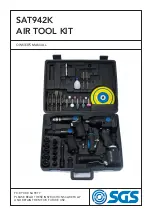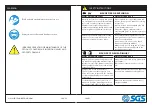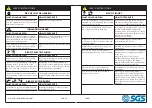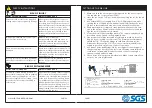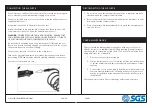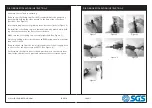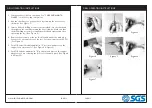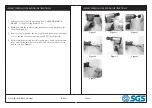
PAGE 17
PAGE 16
1. Rotate the bearing seat so that the aperture faces the tab of the set
plate.
2. Push the set plate forward so that the tab enters the aperture in the
bearing seat. The bearing seat will be held static.
3. Screw the sanding pad onto the bearing seat by hand and ensure it is
fully tightened. Release the set plate tab before the tool can be used.
FITTING THE SANDING SHEET
4. Peel off the back of the self adhesive sanding sheet and stick it to the
backing pad. Take care that it is positioned centrally.
5. IMPORTANT: Only use sanding sheets designed for use with this type
of 150mm dia sanding pad.
SANDER - INSTALLING THE PAD
1. Squeeze the trigger against the body of the tool to start the sander
and control the speed. Evaluate the speed and adjust as follows.
2. Adjust the operating speed by twisting the speed control shown. The
speed of rotation is shown by the arrow embossed on the tool body
(anti-clockwise will increase the sanding speed.)
3. To begin work, rest the disc pad on the workpiece and start the
sander. Let the tool do the work. The actual weight of the machine is
normally sufficient for efficient sanding. Do not put additional pres-
sure on the machine, which would only slow down the speed of the
pad, reducing efficiency and placing an additional burden on the mo-
tor.
4. Pass the sander back and forth in wide, overlapping areas, taking care
to keep the sander moving around at all times. Avoid dwelling in one
place for more than a moment.
5. Release the trigger to stop the tool.
6. Always ensure the tool has stopped before putting it down.
ADJUSTING THE SPEED
WWW.SGS-ENGINEERING.COM

